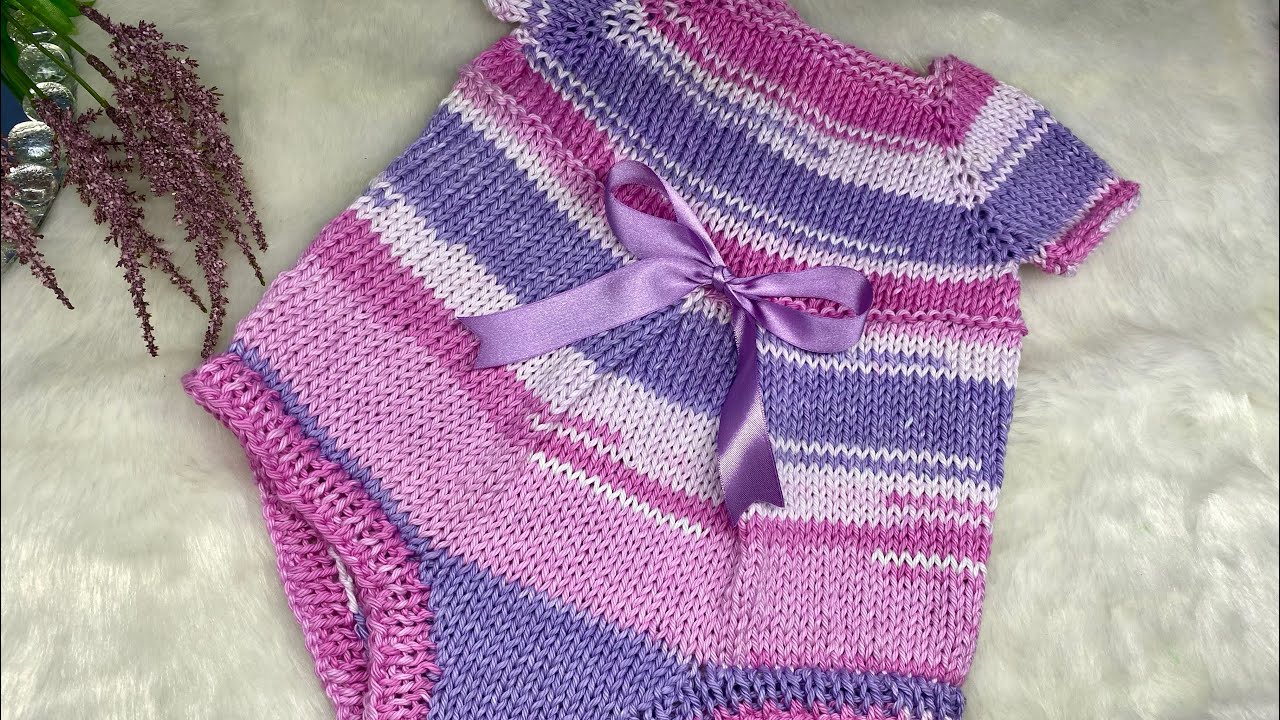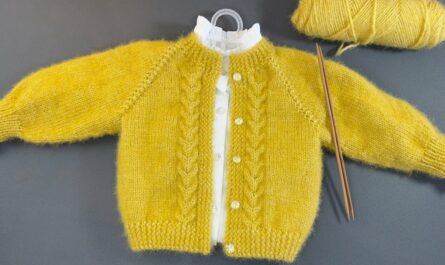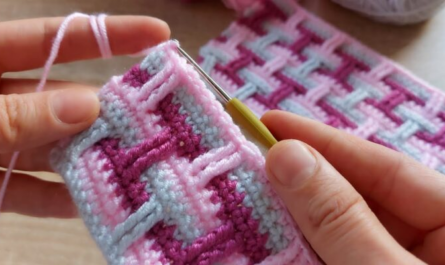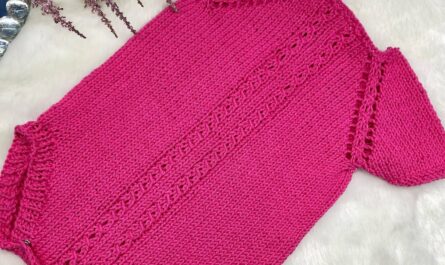The charm of a handmade baby garment is undeniable – each stitch a whisper of love and care. For knitters who cherish the tactile satisfaction of working with two straight needles, the idea of creating a seamless, complex piece like a baby bodysuit or romper might seem daunting. However, a “new” and thoughtfully designed model has emerged, simplifying this process while delivering unparalleled versatility and timeless unisex appeal: the two-needle knitted bodysuit/romper/gardener model.
This innovative pattern offers a fresh approach to a beloved classic, allowing you to craft a single, adaptable design that transforms from a practical bodysuit to a playful romper, or a charming, full-length “gardener” overall. All this, achieved with the comforting rhythm of flat knitting and meticulous seaming.
The “New Model” Unveiled: Key Features & Design Philosophy
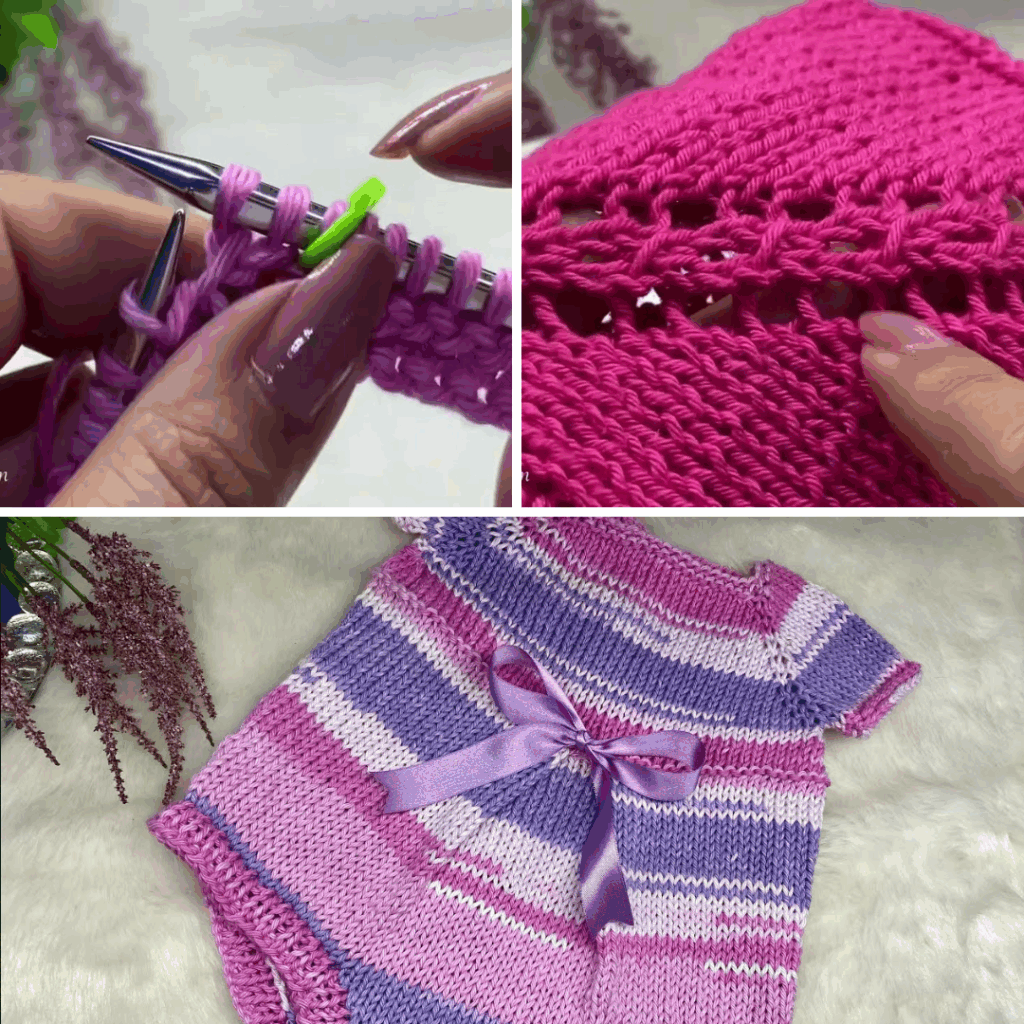
What makes this particular pattern a standout? It’s the intelligent design that blends form, function, and accessibility:
- True Unisex Appeal:
- Classic Lines: The design often favors straight, clean lines with minimal shaping beyond essential fit, making it inherently gender-neutral.
- Adaptable Sizing: Patterns are typically designed with generous ease and clear sizing guidelines, accommodating various body types.
- Neutral & Versatile Color Palettes: While any color yarn can be chosen, the model shines in earthy tones, muted pastels, or bold primary colors that transcend traditional gender norms.
- Functional Design: Focus is on practicality – ample room for diapers, ease of movement, and simple, secure closures.
- Versatile Forms from a Single Pattern:
- The Bodysuit Base: The foundation garment, featuring snaps at the crotch for easy diaper changes and comfortable leg openings.
- The Romper Extension: By simply adding more length to the legs and finishing with cuffs, the bodysuit seamlessly becomes a cute, short-legged romper, perfect for warmer weather or active play.
- The “Gardener” Overall: This full-length version evokes the charm of classic dungarees or overalls. It features longer legs and often a bib-style front with adjustable shoulder straps, making it ideal for layering or more robust wear. The “gardener” moniker suggests durability and practicality, hinting at pockets or a slightly more robust construction.
- Two-Needle Innovation:
- Accessible Construction: This is the core appeal. The entire garment is broken down into manageable flat panels (front body, back body, and sometimes separate leg pieces). This eliminates the need for circular needles or double-pointed needles, making it perfect for knitters who prefer working flat.
- Controlled Shaping: Working flat allows for precise shaping with increases and decreases at the edges of panels, making it easier to visualize and execute intricate curves for armholes, necklines, and the crucial crotch area.
- Meticulous Seaming: The beauty of this model lies in its well-designed seams. When joined with techniques like the Mattress Stitch, these seams can be virtually invisible, creating a garment that looks as if it were worked seamlessly in the round.
- The “Gardener” Aesthetic:
- This isn’t just an overall; it’s designed with a nod to utilitarian charm. Features might include:
- Bib Front: A classic overall style, offering extra coverage and a distinct look.
- Adjustable Shoulder Straps: Often achieved with buttonholes and buttons, allowing for growth and a customized fit.
- Optional Pockets: Small, functional pockets on the bib or back, adding to the practical and adorable aesthetic.
- Durable Fabric: Encourages yarn choices that are both soft for baby and robust enough for active wear.
- This isn’t just an overall; it’s designed with a nod to utilitarian charm. Features might include:
Why Knit This “New Model”?
- Inclusivity: Create garments suitable for any baby, making gifting easier and wardrobes more flexible.
- Practicality Personified: The all-in-one design means no riding up, excellent coverage for diapers, and easy layering. Snap/button closures at the crotch are a game-changer for diaper changes.
- Skill Development: Master essential garment knitting skills: precise shaping, invisible seaming (especially the Mattress Stitch!), creating buttonholes, and potentially knitting pockets.
- Heirloom Quality: A handmade, versatile piece that can be passed down through siblings or even generations.
- Sustainable & Thoughtful: Embrace slow fashion by crafting a durable, re-wearable garment with love.
Materials: Cultivating Your Project
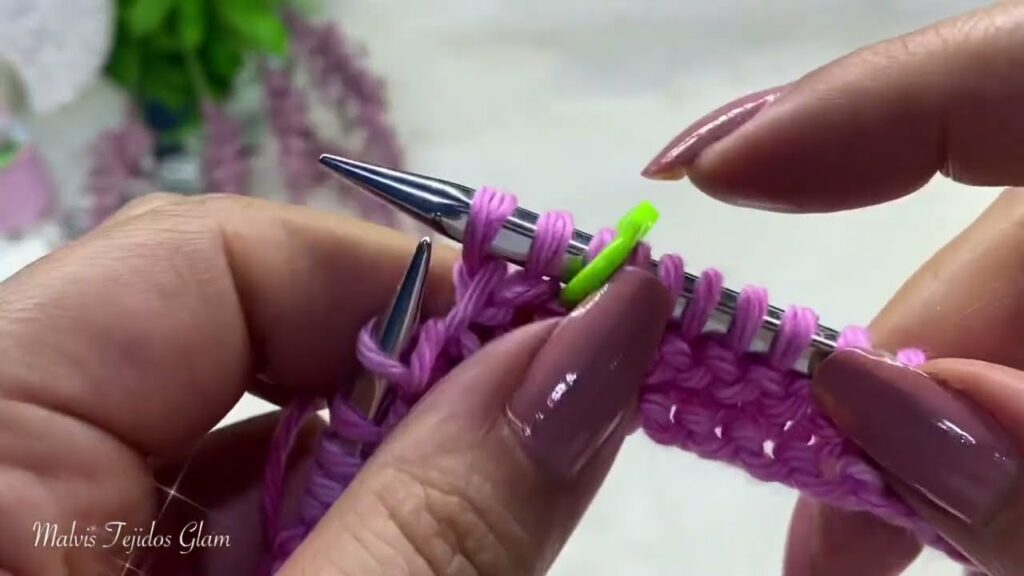
Choosing the right materials is essential for comfort, durability, and a professional finish.
- Yarn:
- Fiber:
- Superwash Merino Wool: Excellent for softness, warmth, and ease of care (machine washable).
- Cotton or Cotton Blends: Breathable, durable, great stitch definition, ideal for warmer climates.
- Bamboo or Viscose Blends: Offer beautiful drape and a silky feel, very gentle on skin.
- High-Quality Baby Acrylics: Hypoallergenic, easy to wash, and available in a vast color palette.
- Weight: DK (Double Knitting, Category 3) or Worsted (Category 4) are generally recommended for their balance of drape and sturdy fabric.
- Quantity: As an all-in-one garment, a bodysuit/romper/gardener will require a significant amount of yarn – check your specific pattern for exact yardage, usually ranging from 300-800 yards (270-730 meters) or more depending on size and leg length. Buy all from the same dye lot.
- Fiber:
- Straight Knitting Needles: The size recommended by your pattern to achieve the correct gauge.
- Stitch Holders or Waste Yarn: For holding live stitches (e.g., shoulder stitches, bib stitches).
- Tapestry Needle (or Blunt Yarn Needle): Indispensable for seaming and weaving in ends.
- Scissors.
- Measuring Tape: Crucial for checking gauge and garment dimensions.
- Buttons or Snaps:
- For the crotch closure (bodysuit/romper/gardener): Sew-on snaps or snap tape are common.
- For shoulder straps or side closures (gardener model): Flat, baby-safe buttons that are securely sewn and too large to be a choking hazard.
- Blocking Mats & T-pins: Essential for shaping your finished garment.
Essential Techniques: The Tools for Growth
Mastering these techniques will ensure a successful project:
- Basic Stitches: Knit (k), Purl (p).
- Cast On & Bind Off: Standard methods for starting and finishing edges.
- Ribbing (K1P1, K2P2): For cuffs, leg bands, and the bottom of the bib for stretch and neatness.
- Increasing Stitches:
- M1L/M1R (Make One Left/Right): Nearly invisible increases for shaping.
- KFB (Knit Front and Back): A visible but straightforward increase.
- Decreasing Stitches:
- K2tog (Knit Two Together): Decreases leaning right.
- SSK (Slip, Slip, Knit): Decreases leaning left.
- Used extensively for armholes, necklines, shoulder shaping, and the crotch curve.
- Picking Up Stitches: For edgings like armbands, neckbands, or plackets along raw edges.
- Buttonholes: Creating small openings for buttons (often a yarn over followed by a decrease).
- Pocket Construction (for “Gardener”): Learning how to create either integrated pockets (where stitches are held) or separate pockets to be sewn on later.
- Seaming (The Star of Two-Needle Knitting):
- Mattress Stitch: The absolute gold standard for creating virtually invisible vertical seams. Crucial for joining the body panels and legs seamlessly.
- Horizontal Seaming: For shoulders, a basic seam or even grafting (Kitchener stitch) can be used.
- Blocking: Transformative! It evens out stitches, relaxes the fabric, and sets the final shape and drape.
Construction Journey: Planting the Seeds of Your Project
This model typically involves knitting separate flat panels and then joining them.
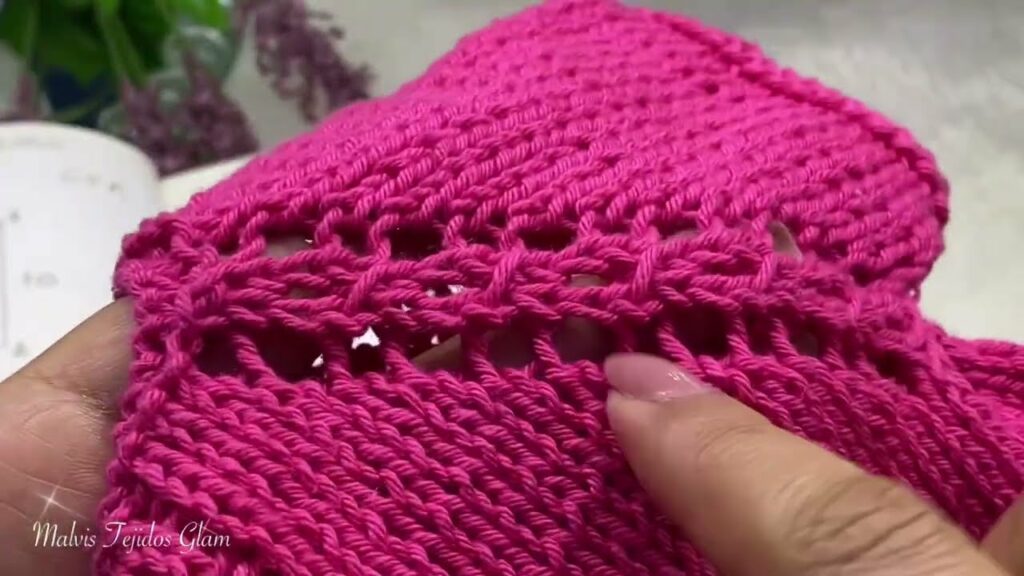
Part 1: Front Panel (Legs & Bib)
- Legs (Gardener/Romper): Cast on for one leg. Work in rows, shaping the inner leg with increases. Repeat for the second leg. (For a bodysuit, you might start with a wider section that includes both leg openings).
- Join Legs & Work Torso: The two leg panels are then joined (often with a few cast-on stitches between them for the crotch) and worked as a single piece up to the armholes. Shape for hips and waist.
- Armholes & Neckline/Bib Shaping: Once at armhole depth, begin decreasing for armholes. Simultaneously, work the shaping for the front bib (often a straightforward rectangle) and any neck opening.
- Shoulders: Finish the shoulders, leaving stitches live on a holder or binding off, depending on your seaming preference.
Part 2: Back Panel (Legs & Back)
- Mirror Front: Knit the back panel largely mirroring the front, especially the legs and torso shaping.
- Back Bib/Straps: Shape the back to support the bib and straps. This might involve a narrower back piece that leads into the strap attachments.
- Shoulders/Strap Attachment: Finish the shoulders, or prepare the top corners for strap attachment (e.g., by continuing to knit the strap directly from the back shoulder).
Part 3: Straps (for Gardener/Romper)
- Knit Straps: If not integrated, knit two separate flat straps of desired length and width.
- Buttonholes: Create buttonholes at the ends of the straps that will attach to the front bib.
Part 4: Assembly & Finishing
- Seaming: This is where the magic happens.
- Shoulder Seams: Join front and back shoulders.
- Side Seams: Join front and back body panels from the armhole down the sides and along the outer leg seams.
- Inner Leg Seams: For rompers/gardeners, join the inner leg seams.
- Crotch Seam: Join the front and back crotch areas.
- Edgings:
- Leg & Armhole Bands: Pick up stitches around leg and arm openings and knit ribbing (or a simple garter/seed stitch border) for a neat, stretchy finish.
- Neckline: Pick up stitches around the neckline and knit a neat band.
- Attach Straps: Securely sew the straps to the back of the overall.
- Pockets (if applicable): If making separate pockets, sew them securely onto the garment.
- Weave in All Ends: Meticulously weave in every single yarn tail. This is paramount for comfort against delicate skin and durability.
- Blocking: Gently wet the finished garment, shape it according to the pattern’s schematic on blocking mats, pin it to size, and allow it to dry completely. This step is transformative, evening out stitches and setting the shape.
- Attach Closures: Sew on all buttons or apply snaps securely.
Customization: Nurturing Your Unique Design
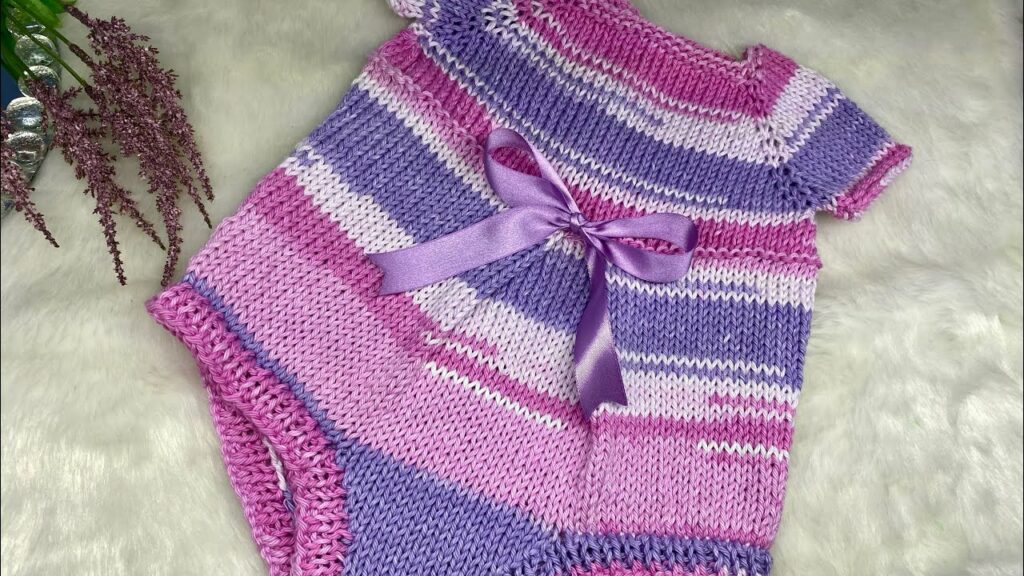
This model is a fantastic canvas for creativity:
- Color Play: Use variegated yarns, stripes, color blocks, or subtle two-tone designs.
- Stitch Textures: Experiment with simple textures like seed stitch, moss stitch, or subtle rib patterns on the main body.
- Pocket Variations: Add patch pockets, hidden pockets, or even a kangaroo pouch.
- Embroidered Details: Personalize with initial embroidery, small motifs, or decorative stitching.
- Strap Styles: Beyond simple straps, consider i-cord straps, braided straps, or wider ribbed straps.
Caring for Your Knitted Garden Wear
Proper care ensures your handmade treasure lasts:
- Follow Yarn Label Instructions: Always refer to your specific yarn’s care guidelines.
- Machine Wash (if yarn allows): Many baby yarns are superwash and machine washable on a gentle cycle with cool water. Always use a mesh laundry bag to protect knitted items.
- Hand Wash (Recommended for Delicates): For lace patterns or non-superwash wools, hand wash gently in cool water with a mild detergent.
- Reshape and Lay Flat to Dry: Never wring, twist, or hang a wet knitted garment, as this will stretch and distort its shape. Gently squeeze out excess water (rolling in a towel helps), reshape the garment to its original dimensions, and lay it flat on a clean towel or a mesh drying rack to air dry completely.
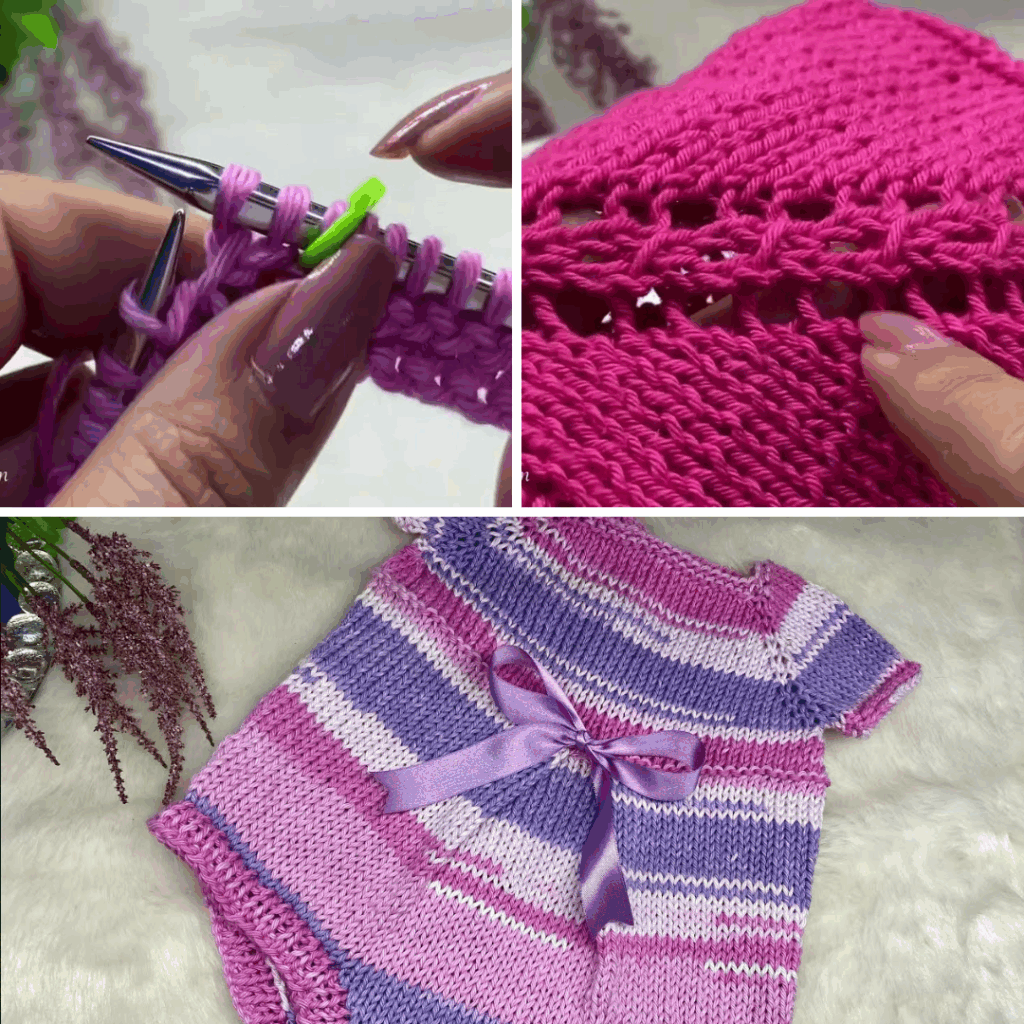
Conclusion
The new unisex bodysuit/romper/gardener model knitted on two needles is a testament to clever design meeting traditional techniques. It demystifies garment knitting for those who prefer working flat, offering a deeply satisfying creative journey. The result is a versatile, charming, and practical piece of clothing that celebrates handmade artistry and wraps a little one in enduring comfort. So pick up your straight needles, cast on, and discover the joy of cultivating this delightful knitted garment! Sources
Video Tutorial ;
